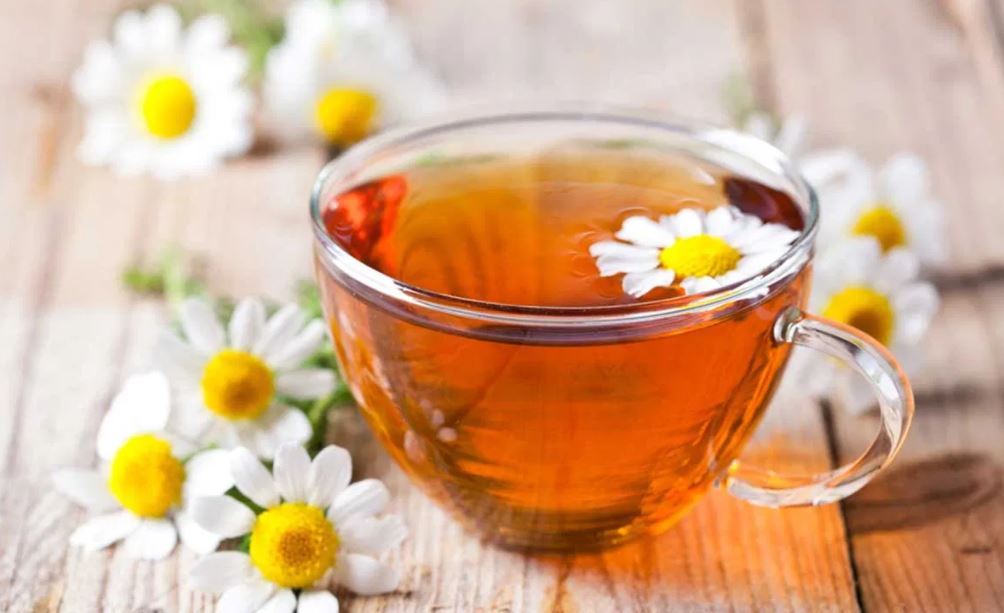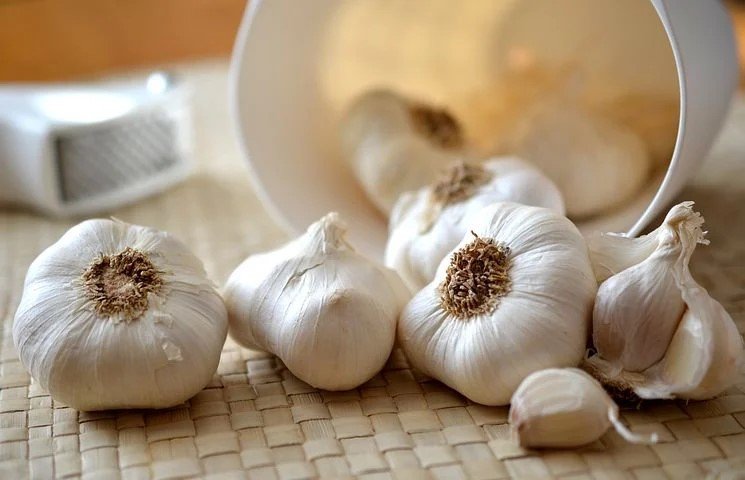Growing garlic at home has become an exciting alternative for households in America who don’t have big yards. People who are short of space want to utilize their existing space by using companion plants.
Good Companion Plants for Garlic include Fruit trees, Vegetables like Lettuce, Carrots, Beets, Peppers, Tomatoes, Eggplant, Potatoes, Cabbage, Broccoli & Cauliflower, etc.
Bad Companion Plants for Garlic include Asparagus, Beans, Sage, Strawberries, and Onions.
Companion plants for garlic help save space as well as offer a variety of other benefits like nutrient balancing.
Crop farmers have long used this technique of companion plant growing. It is like alternating crop planting every season to maintain soil nutrients and reduce pests. Garlic planters can also do this to adopt many benefits that are long-lasting.
Garlic occupies a very small area in the garden. Nutrient-rich well-drained soil and full sunlight are its main demands. It would be a waste to let the area surrounding the garlic go to waste. To be more efficient, you will probably want to grow more vegetables from the area you have.
Good Garlic companion plants
Depending on the deficiency of nutrients in the soil and pests that are present, a suitable companion plant can be chosen.
Choosing the best companion can help you grow the best garlic in your own garden! If you play your cards well you can grow another vegetable and make your garden smarter.
1. Fruit Trees
A variety of fruit trees are known to benefit from being planted with garlic. Garlic helps plants by preventing attacks from borer insects and mites that affect the bark and trunks of trees.
Garlic has also been known to protect against apple scabs and leaf curl in certain fruit trees. All fruit trees are benefitted when paired with companions like garlic planted at the base.
2. Vegetables
Garlic is often paired with vegetables. Short vegetables that are grown in the same season make the best option. Here are some examples of garlic companion vegetables and their relationship with garlic.
- Lettuce- Lettuce does not utilize the same nutrients as garlic and there is no competition for soil minerals. They both grow well in the same season and can be planted together. Additionally, the garlic offers lettuce protection from insects that feed on lettuce leaves.
- Carrots- Garlic and carrots form a mutualistic relationship. This means both plants are benefited in one way or another. Carrots will keep garlic insects away. Garlic will keep the carrot fly from the carrots and prevent them from laying their eggs on the carrot leaves.
- Beets- You can fill in the spaces between your garlic with beets. Beet vegetables draw nutrients from a separate layer of soil. This avoids any conflicts for nutrients. The garlic will prevent arising any beet fungal infections.
- Peppers, Tomatoes, Eggplant, Potatoes, Cabbage, Broccoli & Cauliflower, etc also make good companion plants with Garlic
3. Flowers

Some flowering plants can increase the overall growth of garlic. People who want to stimulate their garlic plants and have attractive flowers can choose the following plants.
- Yarrow- Yarrow is a flowering herb that has other uses in cosmetics and health remedies. It is a great companion for garlic since it promotes growth and provides an attractive look to the vegetable patch.
- Chamomile- Chamomile is another flowering plant related to daisies. Chamomile is used to flavor tea. Growing this with garlic will improve the growth and flavor of garlic. You can also enjoy the beauty of its appealing flowers.
- Roses, Marigolds, and Geraniums, all make good companion plants for garlic. They are all flowering plants that can add color to your vegetable garden. You can easily place garlic plants between these flower bushes. Do make sure the garlic plants are still getting enough sunlight.
Why Garlic Turns Green or Blue? Is It Safe or Risky to eat? (Solved & Explained)
Bad Garlic companion plants that you should avoid
Not every plant is suitable as a companion plant for garlic. Pick the wrong plant and your garlic could stunt the growth of the companion plant. Therefore, you need to carefully assess each plant’s nutrient requirements.
The following plants are plants that should never be planted with garlic. They offer no benefits and could be affected by garlic, or vice versa.
1. Asparagus
Asparagus is a common American vegetable. This should not be grown near garlic. Not only does garlic stunt the growth of Asparagus, but it also leads to an alternate flavor. You can still grow it in the yard but it should be far away from your garlic.
2. Beans
Avoid planting any type of legumes (beans and peas) with your garlic. The garlic can hinder bean growth, leading to a wasted crop of beans. This is similar to when you grow legumes along with any member of the Allium family.
3. Sage
Sage is a common herb that has great use in the culinary world like garlic. It is not advised to grow this along with garlic. The reason being sage can negatively affect the growth of the garlic. You could notice your garlic is not growing at all.
4. Strawberries
Strawberries are a plant everyone loves to grow at home. Most people opt to grow strawberries near garlic due to the antifungal properties of garlic. However, some evidence says garlic can stunt the strawberry plant and reduce the berry output.
5. Onions (any Allium member)
Planting a consecutive row of garlic and onion-related plants can heavily attract onion maggots. With nothing to deter them, the infestation can claim the entire crop of garlic and onions. Even garlic should not be grown in one area in abundance.
Do not grow two types of Allium vegetables together. This could promote an unimaginable surge of pests and diseases in the garlic and onion plants. This includes onion maggots, thrips, and bulb mites.
What is garlic companion planting?
Companion planting is a natural method of nutrient balancing in soil and pest management. It is the practice of growing two different plant species near each other.
This creates a balanced ecosystem where both plants help each other. For example, one plant may help with nutrients whereas another may help with pest management.
Ideally, both plants should be benefitted. But only one plant may benefit without hindering the growth of the other plant.
Small-scale farmers and home gardeners usually adopt this method so that they get a better harvest of Garlic and other plants. They often used Garlic as a companion plant to deter pests.
For this to work, any plant grown next to Garlic would not help. You would need to choose specific ones.

What are the benefits of garlic companion planting?
Many experienced garlic growers have stated the unique benefits they observe while growing a beneficial companion plant.
Flavor
Some plants add to the flavor of the nearby plants. Like Chamomile if sown next to Garlic is said to increase the Garlic flavor.
Pest deterrent
Pests are a common problem for all vegetable garden enthusiasts. Certain micro-organisms, pests, and diseases could affect your crops and vegetables. Luckily, garlic produces large amounts of sulfur.
Sulfur, naturally produced by garlic, can help keep these pests away. The pests may include aphids, ants, flies, snails, moths, etc.
Weeds
Weeds are bad since they use up all resources meant for garlic growth. The ones that grow tall can shelter the garlic from sunlight. This will lead to stunted garlic growth.
A companion plant that inhibits weeds would allow garlic to reach optimum growth. People who do not want to use other means of weed control can opt for these plant-based alternatives.
Animals
People who have small animals in their yards can use animal deterring plants that keep these animals away.
Garlic does offer this property, so it is a good companion for plants that are vulnerable to animals.
It has a potent smell that deters rabbits, deer, and other animals who can eat garden vegetable produce. Even after removing garlic, its strong scent remains in the soil!
Nutrients
Some vegetable groups like beets are known to enrich the environment with minerals and nutrients.
Crop rotation and companion planting is vital. It avoids any chances of nutrients becoming completely depleted.
A word of Caution – Do not plant companions like Asparagus or beans next to Garlic as they may negatively affect the growth of the garlic.
Conclusion
You would need to plan to receive maximum benefits from garlic companion plants. Certain plants do not do well with garlic whereas other plants flourish in the presence of garlic.
A few plants will even extend benefits to the garlic plant by stimulating growth or pest protection. Opting for a companion plant with garlic is a way to utilize space and soil. The result will be a high output of vegetables or an attractive garden.
FAQs
Here are some questions commonly asked about garlic growing and companion plants. Read these questions to understand more about garlic and what to plant with it.
Yes, garlic and tomatoes can be planted together. They make a good team since garlic can help your tomatoes grow better. It also can influence the flavor of the tomato fruit.
Garlic also helps to keep pests away from the tomato. This includes red spider mites and aphids. The most favorable way to arrange these two companion plants is to create a border of garlic around your tomato plants.
You can plant members of the nightshade family after garlic. Garlic is a light feeder and requires a small number of nutrients. You can follow up a garlic harvest with peppers, tomatoes, and potatoes. These are heavy feeders and require more nutrients different from garlic.
Rotation of plants is important. Growing the same plant consecutively can result in poor soil quality and can leave pests and fungus in the soil. The unique benefits of these plants are they deposit some nutrients back into the soil and are fast growers.
No, you should not plant garlic in the same area over and over again. The reason for this being is it is more vulnerable to garlic-specific diseases. This includes onion maggots that plague the onion family of vegetables.
Also, constant crops of garlic can remove all the required nutrients from the soil.


